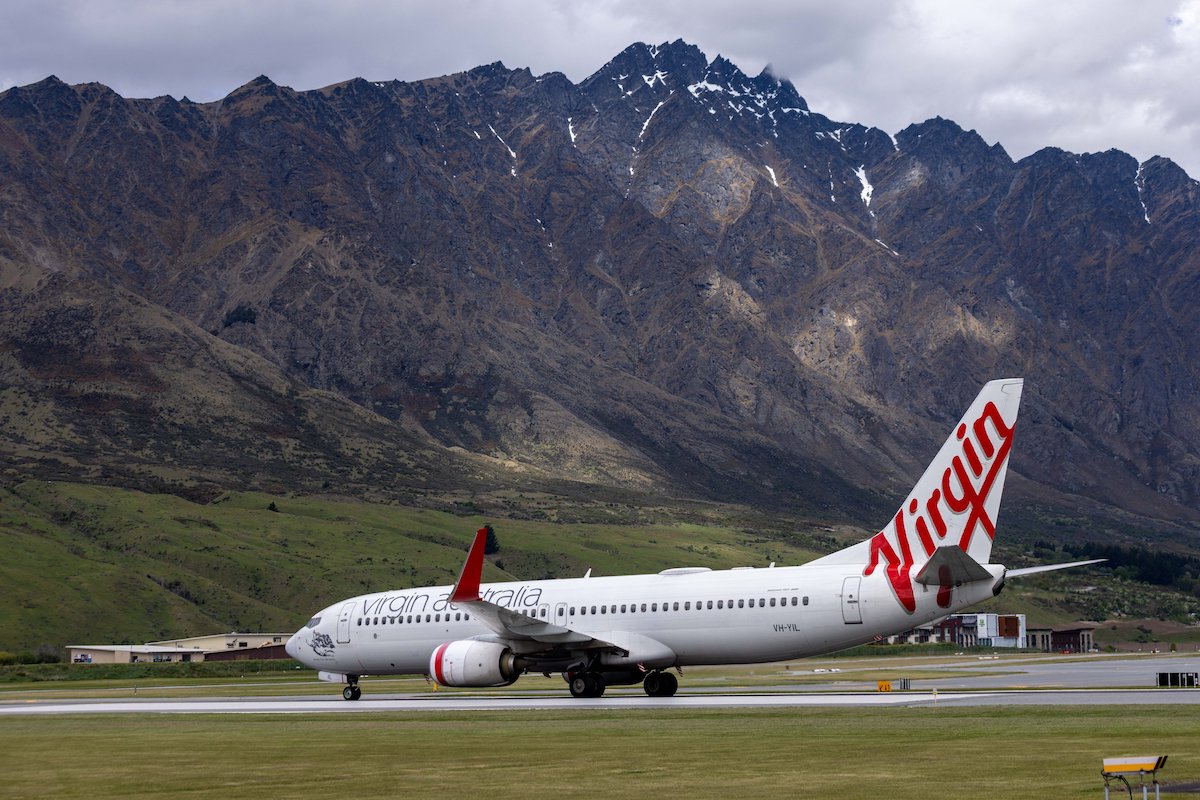Virgin Australia Uses 737s to Keep Tokyo Slots as Hedge for Future Longhaul Asia Return

Photo Credit: Virgin Australia
Virgin Australia has emerged a much stronger airline from the Covid-19 pandemic than it was at the outset of the crisis. A court-led restructuring of Australia's second largest carrier created a leaner and, executives hope, a much more profitable airline.
One of the biggest changes to the Brisbane-based airline was its decision to axe its longhaul network with the disposal of its fleet of Airbus A330 and Boeing 777 widebody aircraft. Instead, Virgin Australia would focus on domestic Australia and near-international flying opportunities — Bali and New Zealand, for example — with an all-Boeing 737 fleet. That shift has proved a dramatic success: CEO Jayne Hrdlicka said in October that the airline was back in the black and on track to a profit for the full year ending in June 2023. An initial public offering could come as soon as next year.
Hence at first glance, it is a bit of a head scratcher why Virgin Australia on Wednesday unveiled plans to resume flights to Japan, a longhaul market from Australia if there ever was one. The airline will connect Tokyo's popular and close-in Haneda Airport to Cairns daily from June 28 with — you may have guessed it — a 737. That's a long flight on a 737 by any stretch of the imagination, even the Max 8 that Virgin Australia plans to fly on the route.
At 3,627 miles, the Cairns-Tokyo route will be the sixth longest 737 Max flight in the world, according to Great Circle Mapper and Diio by Cirium schedules. The longest is Malindo Air's nonstop between Kuala Lumpur and Melbourne, Australia, at 3,918 miles.
But budget airlines like Malindo are not Virgin Australia's main competition. It competes for passengers with the likes of Qantas Airways domestically or All Nippon Airways on flights to Japan, and both of those airlines fly larger, more comfortable widebody aircraft — Airbus A330s and Boeing 787s to be precise — on Australia-Japan routes. And Qantas' budget arm, Jetstar Airways, already flies the Tokyo-Cairns route with a 787, Diio data show.
Why then fly a 737 to Tokyo? It's the slots, silly. Virgin Australia has one highly sought-after slot pair at Haneda airport. Rules governing the use of those slots — typically an airline must use a slot every 90 days or lose it — have been waived during the pandemic, but those waivers are scheduled to sunset at the end of March. June 28 happens to be right about 90 days later. Reacquiring a lost slot pair at Haneda, which Qantas would certainly jump for, could take years if it happened at all.
Add to that the opportunity to take advantage of the expected surge in international travel to and from Asia as Covid restrictions disappear. Japan reopened its borders to all travelers in October, and Australia reopened earlier this year.
“It was just irresistible to use Far North Queensland as the opportunity to open up Australia to Haneda," Hrdlicka told the Australian Financial Review. She cited strong tourism demand from Japanese visitors to visit northern Queensland, which includes the Great Barrier Reef, as well as connectivity to major Australian cities elsewhere in the airline's network.
It would make sense for Virgin Australia to stick with its new Tokyo route just to keep the Haneda slots whether it is financially successful or not. One potential measure of the route's success is if the airline adds more longhaul 737 Max routes in the future; both Bangkok and Hong Kong are within the range of the 737-8 from Cairns, for example.
And Virgin Australia may yet prove itself ahead of the curve. Last year, Qantas ordered at least 20 Airbus A321XLRs, the longest range variant of the popular A321neo family. The airline could use them for new long, thin routes from Australia to destinations in either Asia — like Cairns to Tokyo — or the Pacific islands when they begin arriving around the middle of the 2020s.
Aside from Tokyo, Virgin Australia has shown little interest in getting back into the longhaul flying game. It launched a new partnership with United Airlines earlier this year that gives its customers access to the second largest network between Australia and the U.S. As part of the new pact, Chicago-based United began flights to Brisbane — Virgin Australia's main hub — from San Francisco in October. And in November, Virgin Australia strengthened its existing partnership with Singapore Airlines that provides connectivity for its travelers into Asia and onwards.
“There is a lot of demand right now for longhaul flying and not enough capacity, but you have to plan for the long term," Hrdlicka said in September when asked if the airline would reacquire widebody aircraft to resume longhaul flights. "You don’t invest significant amounts of capital in aircraft to solve for a moment in time."
